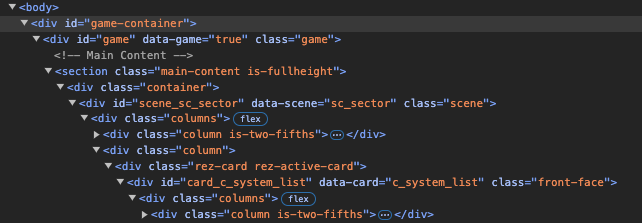Hi,
It’s possible that i suffer from aphantasia as well. Perhaps it’s why i really enjoy graphics in IF games. Personally, i feel it enriches the story and experience. But i know, at the same time, there are people that find the graphics a distraction to the story - which is the total opposite.
Regarding text, what I’ve discovered;
I am striving to maintain the long-form IF narrative but in the presence of pictures. This means having a reasonable amount of text on screen simultaneously with images. The situation for general VNs is a lot less text. More of the short-form style from comics.
Some games have a text output box where a bunch of text appears almost line by line, a bit at a time. Having to click though several "more"s is annoying i find.
When dealing with writers, i find they generate “walls of text” fast. Lots of it. After all, that’s what they do 
I am discovering ways to break up “walls of text” by adding interactivity. For example, a whole pile of exposition should never be in one go, but split up and added to descriptions of things in the scene or story.
A lot of general story background can be put into character dialogue. Most dialogue will have some background info for the character, some general stuff can be hidden in there too. Or just put from the character POV.
The same goes for major story beats, where there is a lot of text generated in one story scene. This needs to be spread out, or the player will get bored.
Because we are making non-linear stories, it’s necessary to maintain the player interest by allowing them to follow their agency. As I’m starting to put the parser on the back seat, it means having more things to click on and more dialogue options per unit of text. What I refer to as the text cadence. Too much text at once starves the player of agency and therefore interest.
If the player’s interest is lost, the game will die.
Demo:
Dr Who
This game is not a great example of writing, but i refer to it to show how i am tackling the “text and picture problem”. You will see how there is still 1 or 2 paragraphs of text at the same time as a full size picture.
This was not easy to achieve, as i must maintain text readability whilst not obscuring too much image. Nevertheless, this is about the most text i can fit at any time on screen. Which gives a rule of thumb about how much text is possible between player interactions.

